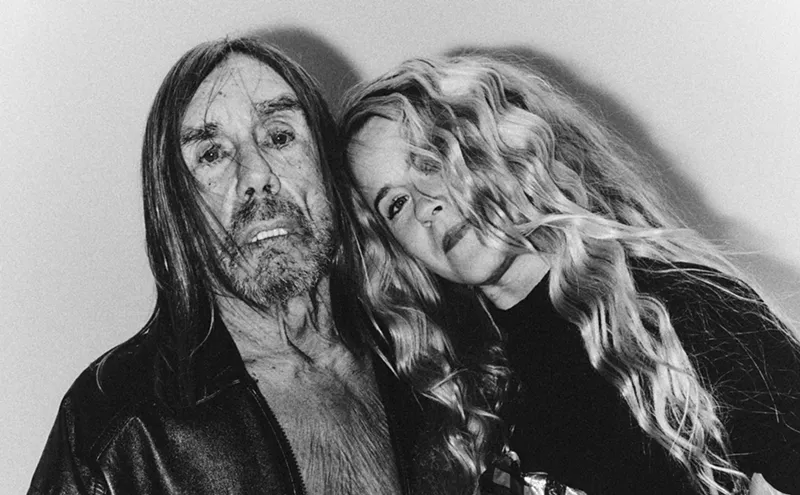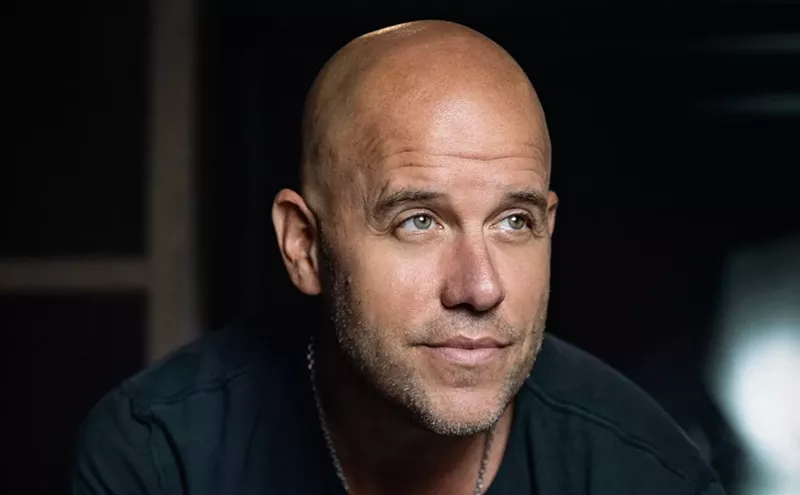The past 100 years have seen key figures fight for its very survival and perpetuation. In the Thirties, Alan Lomax's field recordings of spirituals, work songs, and rural folk tunes that he made for the Library of Congress preserved the history of the blues before it died off with its original, turn-of-the-century purveyors. And in the Sixties, when the blues was usurped by newer forms of music, it took young, pasty Brits like the Beatles, the Rolling Stones, Cream, and Led Zeppelin to rescue it and reintroduce its sound and vibe to enthusiastic American audiences, creating new opportunities for older musicians who had practically been put out of business by the advent of rock and roll.
The genre's latest savior is Martin Scorsese. His fantastic new PBS series, simply titled The Blues (set to air nationally from Sunday, September 28 through Saturday, October 4), goes a long way toward ensuring that current and future generations don't lose sight of its founding fathers and mothers. Six years in the making, The Blues comprises seven feature-length films, each directed by such cinematic notables as Wim Wenders, Charles Burnett, Richard Pearce, Clint Eastwood (whose Piano Blues was unavailable for review), and Scorsese himself. Part of what makes it such a unique and striking achievement is that it frequently eschews a chronological survey (e.g. Ken Burns's Jazz) for a nonlinear, impressionistic approach that aims to convey the spirit of the music rather than beat viewers over the head with facts and figures.
The series opens with Scorsese's beautifully shot Feel Like Going Home, which follows contemporary blues guitarist Corey Harris on his quest to discover the roots of Delta blues while incorporating rare archival performances from such departed legends as Son House, Muddy Waters, and John Lee Hooker. Harris travels through Mississippi and eventually to Mali to seek out, learn from, and perform with Willie King, Taj Mahal, Jelly Roll Kings drummer Sam Carr, backwoods-dwelling fife master Otha Turner (who passed away shortly after filming), and Ali Farka Toure (who is often referred to as the "West African John Lee Hooker"). Refreshingly, Harris appears to be an attentive and humble student instead of an overly inquisitive interviewer, making his encounters with these masters look and feel natural. Throughout he tries to give an understanding of each personality rather than rattle off a laundry list of their achievements.
Richard Pearce directs The Road to Memphis, a particularly moving look at the triumphs and tragedies of veteran bluesmen in the modern age. With a digital camera and a verité style similar to that of Michael Moore, Pearce follows B.B. King and Bobby Rush as they travel to Memphis, the city that launched their careers, for a reunion concert with hometown heroes Rosco Gordon and Ike Turner. The classy King, of course, is treated like a king -- whether it's the admiring fans who accost him in a hotel lobby or his well-appointed tour bus -- and footage taken at his concerts proves he can still pack a big theater. In contrast Rush is seen traveling from gig to gig in a ratty old bus and arguing with promoters over the phone about how little he's getting paid, though the 66-year-old remains convinced that he'll soon draw King-like crowds and be "big as bubblegum." The memorably cringeworthy scene that follows, in which we see a bit of Rush's raunchy, James Brown-meets-Dolemite routine at what looks to be a modestly attended bingo hall, sadly suggests otherwise.
Charles Burnett's Warming by the Devil's Fire and Wim Wenders's The Soul of a Man are the two most radical departures from standard narrative form in the series. Devil's Fire uses a fictional bildungsroman to tell the story of an eleven-year-old Los Angeles boy sent by his mother to live with his preacher uncle in 1956 Mississippi in order to be "saved from sin." Instead he's "kidnapped" at the train station by his other uncle, a skirt-chasin', hell-raisin', music-lovin' guy named Buddy, who intends to expose his nephew to the dark underbelly of Southern blues. Using Buddy's "lessons" to the boy as a device, Burnett works in some wonderful performances by female blues singers like Bessie Smith, Sister Rosetta Tharpe, Mamie Smith, and Elizabeth Cotten.
The Soul of a Man is a surreal piece that traces the lives of Wenders's three favorite players -- Blind Willie Johnson, Skip James, and J.B. Lenoir -- through a convergence of fact and fiction. Since very little footage of Johnson and James exists, he uses actor/musicians Chris Thomas King (O Brother, Where Art Thou?) and Keith B. Brown (Stop Breakin' Down) in their place, filming them with a vintage hand-cranked silent camera and blending their scenes with actual footage of the South taken during the Twenties and Thirties. The resulting black-and-white sequences were reportedly convincing enough to fool audiences at this year's Cannes Film Festival into thinking they were genuine. Soul of a Man also includes stellar performances of the threesome's songs by such contemporary artists as Bonnie Raitt, Jon Spencer Blues Explosion, Nick Cave, and Lucinda Williams, among others (all shot in a style reminiscent of Sessions at West 54th).
Though it's interesting to learn how a bunch of white guys came to live and breathe the blues in postwar England, Mike Figgis's Red, White & Blues is a bit of a visual disappointment and resembles a generic music documentary. It's mainly constructed around sit-down interviews with Eric Clapton, Steve Winwood, John Mayall, and Mick Fleetwood, plus a (fairly middling) Abbey Road Studios session with Van Morrison, Jeff Beck, and Tom Jones leading an assembled band through numerous standards. Overly long and a bit dry, the film contains too many talking heads, although it's entertaining to hear irrepressible British jazz legend George Melly refer to the Stones as hailing from the "Thames Valley cotton fields."
Perhaps the most engaging installment is Marc Levin's Godfathers and Sons. Echoing the observation of a downtown Chicago music fan that "blacks plus Jews equals blues," the film trails Public Enemy's Chuck D. and famed producer Marshall Chess, son of the late Polish immigrant and Chess Records founder Leonard Chess, through the Windy City as they link up with one of the rapper's biggest influences, the Electric Mud Band -- a critically panned late-Sixties project that attempted to update Muddy Waters's sound with acid rock -- to record all-new tracks.
It's fascinating to watch a wide-eyed Chuck D., who is later joined by Common and several members of the Roots, hang and perform with the Electric Mud bluesmen and soak up their history, as well as witness Chuck and Chess candidly discuss issues of race and the blues. But even more significantly, by demonstrating how many hip-hoppers want to embrace their forebears, Godfathers and Sons embodies the mission statement of The Blues as set forth earlier by Corey Harris: "To know yourself you have to know your past, and to know where you're going you have to know where you've been."












